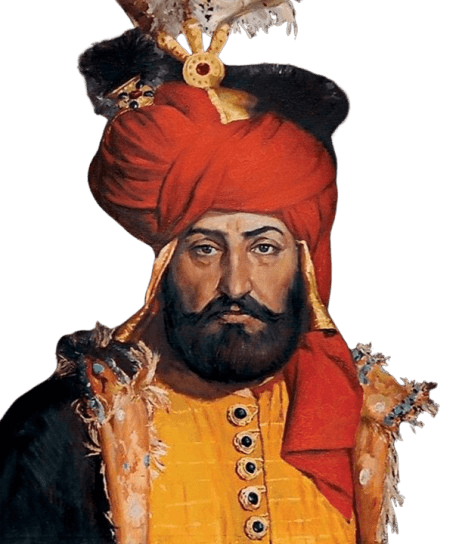Life and achievements
Early life
Murad IV was born on July 26 1612, in the Topkapı Palace in Constantinople to Sultan Ahmed I and Kösem Sultan. His mother's influence characterized his childhood since she was a significant part of his life. When Murad's father died when he was only six years old, he and his other brothers were imprisoned in the Kafes, a kind of imprisonment within the palace. This period of confinement was a standard procedure to avoid other people's claims to the throne.
At the tender age of six, Murad was taken to the tomb of Eyüp Sultan, where the two swords of Muhammad and Selim I were placed in his hands, symbolizing his future as a Sultan. His early education was meticulously designed to instil in him the principles of governance and warfare, preparing him for the throne. Despite his early confinement, Murad IV's upbringing was deeply influenced by the intricate political and cultural dynamics of the Ottoman palace.
Murad IV became a Sultan at age 11 after a palace coup d’état deposed his uncle Mustafa I. At first, his mother, Kösem Sultan, acted as regent and governed the empire until Murad took power in 1632. This regency period was characterized by internal conflicts and external threats, which paved the way for Murad's policies to strengthen the state authority.
Legacy
Murad IV's reign is a complex tapestry of achievements and repression. He is best remembered for his relentless efforts to fortify the sultanate of the Ottoman Empire during a time of internal and external turmoil. His reign was marked by numerous military campaigns, notably the Ottoman–Safavid War, which resulted in the division of the Caucasus and the establishment of the current political map of the region. This military triumph significantly bolstered the Ottoman Empire's influence and control over the Middle East, a testament to the weight of his military achievements.
Murad IV's strict adherence to the law, especially the prohibition of tobacco, alcohol, and coffee, was intended to control the social vices that could lead to an uprising. These measures, though severe, were meant to fight the vices that he perceived were threatening the stability of the empire. Through his governance style, he influenced the judicial and administrative systems of the Ottoman state.
Beyond his role as a political and military leader, Murad IV was a passionate patron of the arts and architecture. He commissioned numerous buildings, each adding to the rich cultural legacy of the Ottoman Empire. His writings, penned under the pseudonym of 'Muradi', reveal his fondness for poetry and learning. Murad IV's influence extended beyond his time on the throne, as his policies and projects continued to shape the empire and its future.
Start your journey in preserving your memories. Sign up for Confinity now!
Learn more about this topic and its relevance in digital preservation →
Milestone moments
Sep 10, 1623
Ascension to the Throne
Murad IV ascended the throne of the Ottoman Empire at the age of 11 when his uncle Mustafa I was overthrown by a palace coup. Thus, his rule began, though his mother, Kösem Sultan, acted as the regent in the beginning.
The first years of Murad's reign as Sultan were characterized by his mother's power and problems of internal conflict and foreign aggression.
May 10, 1632
Assumption of Absolute Power
Murad IV took over the throne and overthrew his mother, Kösem Sultan, from the regency.
This period can be considered a turning point when he introduced strict laws and policies to strengthen state power.
Strict measures and the fight against vices and social disturbance characterized it.
Sep 10, 1633
The Fire of Constantinople or the Great Fire of Constantinople
A great fire swept through Constantinople and destroyed much of the city.
The fire incident resulted from a caulker's carelessness, quickly escalated, and affected many structures.
Murad IV's reaction to the calamity was to reconstruct the affected areas and enforce stringent measures to prevent the fire from recurring.
Dec 10, 1638
Capture of Baghdad
Murad IV personally commanded the Ottoman army that took Baghdad from the Safavids, a significant achievement of the Ottoman–Safavid War.
The city's capture was one of the significant events during the war because it ensured that the Ottomans had complete control over Mesopotamia.
This military achievement played a role in defining modern-day borders in the area.
